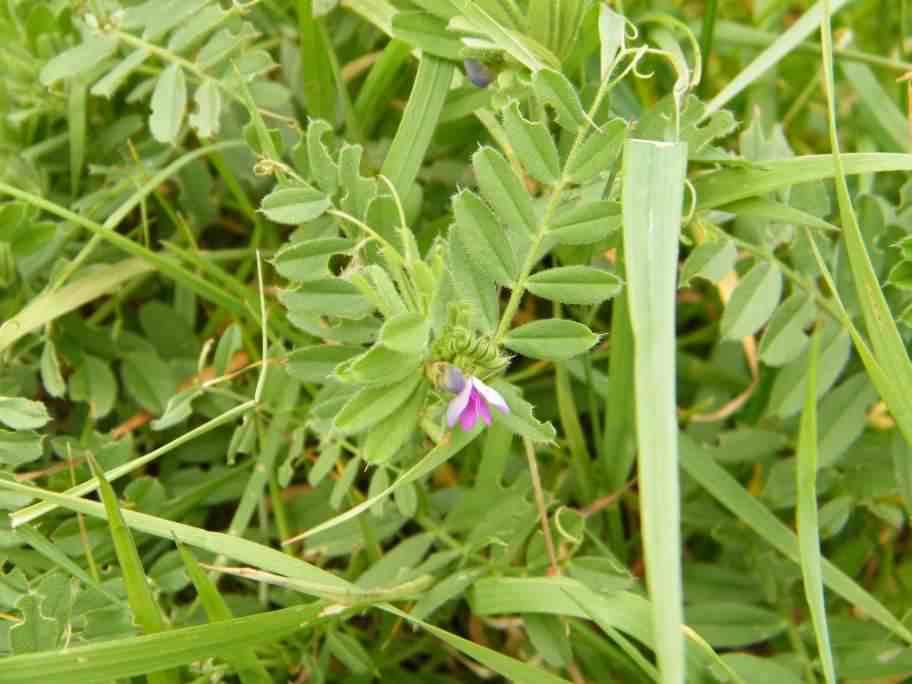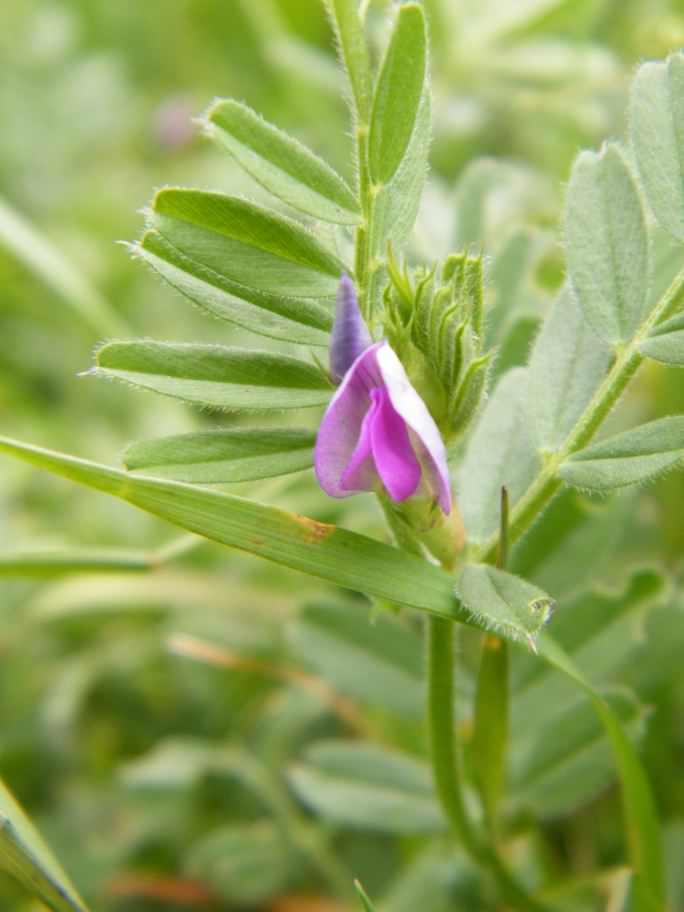
Photos ©2001–
Click any photo for a larger image


Photos ©2001–
Click any photo for a larger image

Common Vetch - Vicia sativa
Family - Fabaceae
Also - Vicia sativa ssp. segetalis
Common vetch is a widespread common annual plant with a scrambling habit growing to around 75cm (30in) high in grassy places and hedgerows, roadsides and open spaces. A member of the pea family it is a nitrogen fixing leguminous plant that is considered a weed when found cultivated fields, but it is often grown as green manure or livestock fodder. Leaves comprise 3–8 pairs of oval leaflets up to 3.5cm (1.4in) long which end in tendrils, on hollow four–sided, hairless or hairy stems which can reach 2m (78in) in length. Groups of one or two pinkish purple rather pea–like flowers grow in the leaf axils and appear from April - September, maturing to black leguminous seed pods 6–7cm (2.4–2.8in) long containing about 12 seeds.
Grown as a fodder crop for animals, Common Vetch is able to produce its own nitrogen fertilizer through a symbiotic relationship with bacteria to produce nitrogen in the plant's root nodules. It is susceptible to other common pea species pathogens including leaf spot, mildew, pea aphids, grasshoppers and leafhoppers.
BCP do not advise or recommend that Common Vetch – Vicia sativa is eaten or used as an herbal remedy. Excavations at Neolithic and Bronze age sites and Roman settlements in Europe have shown Common Vetch to have been in the diet of early humans.
Also see - Tufted Vetch.
Site design ©1999– Brickfields Country Park - Privacy -